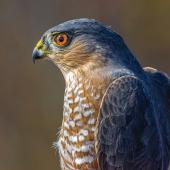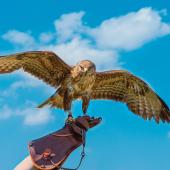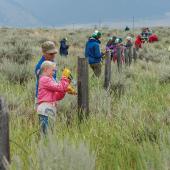The Flight of Spring
Bird migration in southwest Montana.
In Montana, we’re blessed with abundant wildlife and unspoiled landscapes, allowing us to witness one of nature’s most extraordinary wonders: bird migration. When the weather warms and the season begins to change, birds return to the valley from across North America, filling the sky with song. And with over 427 species that call Montana home, you’re sure to spot some of these in flight.
Mountain Bluebird Sialia currucoides
These brightly-colored members of the thrush family return to Bozeman in shifts, beginning around mid-March through early April. They reproduce almost immediately upon their return, hatching chicks by late April into early May, filling the valley with little flashes of blue.
Where to spot: Cottonwood Reservoir, Battle Ridge
Western Tanager Piranga ludoviciana
With tinged-red heads and yellow and black bodies, these male songbirds are hard to miss as they journey back to Bozeman in late May to mid-June. Females are less brightly colored, with olive-green feathers. These birds typically nest in open woodlands, but are known to visit orchards and parks in the area.
Where to spot: Kirk Hill Trail
Sandhill Crane Grus canadensis
Even an untrained ear can recognize the sound of the sandhill crane’s return to the valley, a squawk described by Greg Smith, O/B contributor and avid bird-watcher, as “a long, raspy vibrato, like a stuttering flute.” These large birds migrate back to the valley in early to mid-April to nest and reproduce along valley streams in wetland-like conditions.
Where to spot: Harrison Lake, Ennis Lake
Yellow Warbler Setophaga petechial
One of the most common birds of spring, these bright-yellow songbirds can be spotted mid-May through early June as they migrate back to typically wet, deciduous areas in the valley. Keep an ear tuned for their high-pitched song, a classic mark of spring.
Where to spot: Drinking Horse / Bozeman Fish Technology Center Nature Trail
Calliope Hummingbird Selasphorus calliope
Though hummingbirds tend to be more elusive than other species, looking closely for the world’s smallest long-distance migrant, the calliope hummingbird, won’t disappoint. Males feature a stunning display of iridescent magenta-red rays near their throat and a shorter bill, while females have a greener feathering and white throat. Keep an eye out for these breathtaking birds from late May to early June in thicketed hillsides or forest openings.
Where to spot: Triple Tree Trail
Osprey Pandion haliaetus
These large birds of prey are distinguishable from other hawks by their white bellies and heads, and dark streaks around their eyes. They begin migrating back to Montana in late April to early May, and can be spotted near lakes and rivers as they are known for plunging feet-first into water to seize their dinner.
Where to spot: Three Forks Ponds, Yellowstone River
Check out Wild Birds Unlimited off N. 19th or the Sacajawea Audubon Society’s website to learn more.












